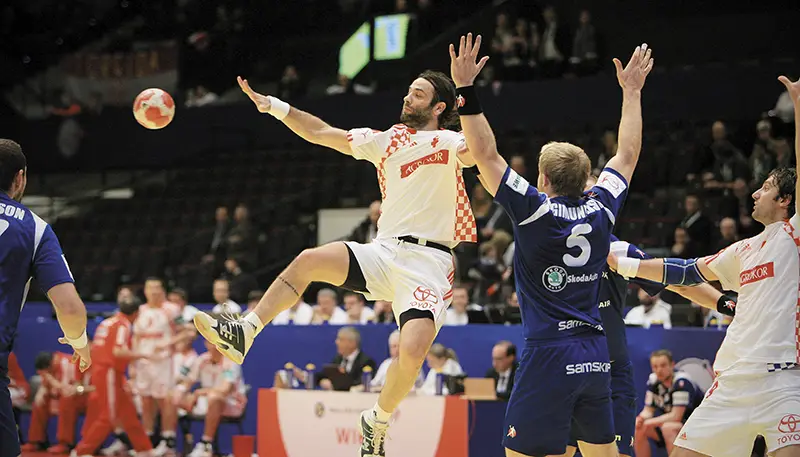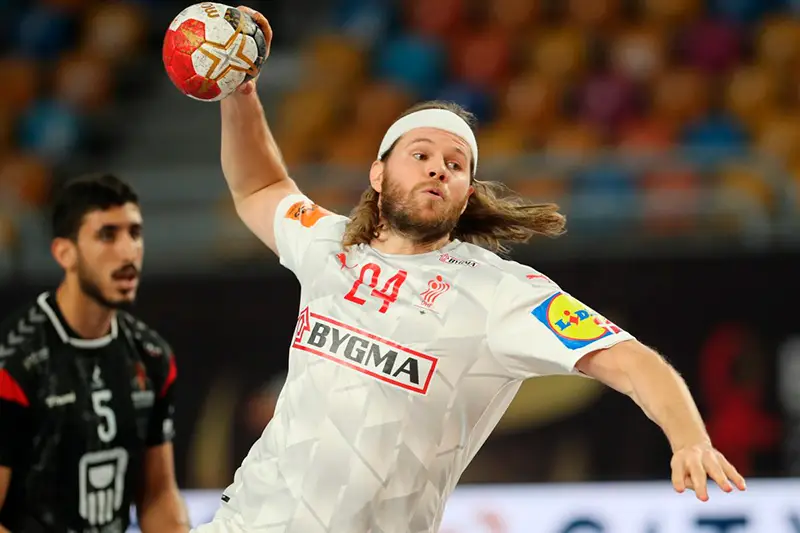Handball legends – who are they? Names written in golden letters in history, athletes whose skills and charisma inspire millions. Great handball players become symbols of their eras, dictating new rules of the game. Statistics, technique, leadership qualities – every factor plays a decisive role. Some have shone in clubs, others have led national teams to world triumphs. So who has left the deepest mark in the history of handball?
You can assess who the best handball player is according to different criteria: personal awards, influence on the game, victories in major tournaments. Among the contenders are legendary players who have won titles, set records and changed the very philosophy of the game. Let’s find out what criteria determine the greatest player and who is among the top handball players of all time.
Main criteria for evaluating the best handball player
Handball players who have won world, Olympic, European and club titles are the elite of the sport. Their achievements go beyond personal honours – they have an impact on the entire handball world, setting new records and raising the game to unprecedented heights.
Here are the key factors that define an athlete’s greatness:
- Olympic gold is the high point of any handball player’s career. Only the best athletes get a chance to compete at the Olympics. And winning the finals becomes a confirmation of their outstanding level. For example, Nikola Karabatic and his participation in three Olympics is a living example of dominance at the world level.
- World and European Championships are titles that define a player’s stability and his influence on the international stage. Victories in these tournaments speak of the athlete’s high competitiveness over a long period of time. Legendary players, such as Ivano Balic, have repeatedly proved their uniqueness in matches against the strongest teams on the planet.
- Club tournaments – EHF Champions League, national championships, EHF Cup Winners’ Cup – this is where the true masters of tactics and technique show themselves. Club level legends don’t always become the best in the world, but their contribution to the development of the sport cannot be denied.
Statistics and efficiency
 Stability in play is a key indicator of skill. The best players are characterised by high efficiency, passing, defence and playmaking skills. The main parameters by which the greatest players are evaluated:
Stability in play is a key indicator of skill. The best players are characterised by high efficiency, passing, defence and playmaking skills. The main parameters by which the greatest players are evaluated:
- Total number of goals in a career – world handball record holders score hundreds and sometimes thousands of goals, creating history. Kirill Lazarov, is the best sniper of the World Championships. He has held this record for more than ten years.
- Shooting percentageis a measure of accuracy and efficiency. Even the most talented players lose the ball, but the great ones turn every moment into a goal.
- Assists and defensive actions – great handball players not only score, but also create chances for their partners. Ivano Balic is known for his amazing vision of the court, allowing him to create chances even from the most difficult situations.
Influence on handball tactics and development
The greatest players don’t just win matches – they change the game itself. Influencing tactics, a new approach to positional attack, improving defence – these are the innovations that make handball players truly great.
- Individual style of play – players with a unique technique often set trends in world handball. Mikel Hansen is known for his inimitable throwing style, which is copied by young players around the world;
- leadership qualities – legendary athletes inspire their partners, lead the team to victories and become true captains on the court. Nikola Karabatic is a shining example of a leader who motivates the team and maintains a high level of play even in the most difficult situations;
- changing the game philosophy – rare handball players are able to influence the evolution of tactics. Goalkeepers introduce new strategies, thanks to which teams win the most important tournaments. Thierry Omeyer has proven time and time again that the goalkeeper can be a key figure in determining the outcome of matches.
Ranking of the best handball players
The list of the best handball players is based on their achievements, contribution to the sport and impact on the game. These legends have left an indelible mark on the history of handball.
Top 5 best players of all time:
- Nikola Karabatic – recognised three times as the best player in the world, twice Olympic champion, four times world champion. One of the most versatile handball players, able to dominate in attack and defence.
- Mikel Hansen – one of the most prolific scorers in history, leader of the Danish national team, winner of three World Player of the Year titles. He is known for his unique shooting technique and accuracy at the end of the attack.
- Ivano Balic – unrivalled playmaker, twice the best handball player in the world, leader of the Croatian national team. Characterised by his unconventional style of play, excellent technique and ability to read the game several steps ahead.
- Kirill Lazarov – absolute record holder in the number of goals at the World Championships, leader of the Macedonian national team, one of the most productive players in the history of handball.
- Thierry Omeyer – one of the greatest goalkeepers in the history of handball. Five-time world champion, two-time Olympic champion, multiple Champions League winner. Distinguished for his phenomenal reaction and ability to stop the most difficult throws.
Each of these athletes proved their excellence at the world level. Winning a huge number of titles and changing the game itself.
Olympic handball champions
Handball at the Olympic Games is the peak of a career for any professional athlete. Only a select few get the opportunity to compete for gold on the world stage. History has known teams that have dominated for decades, leaving an indelible mark on world sport:
- France are a recognised dominant force in the 21st century. Victories at the 2008, 2012 and 2021 Olympics cemented their status as the leading handball nation. Karabatic and Omeyer have symbolised the success of the French national team.
- Denmark are the triumphants of the 2016 Olympic Games. Thanks to the outstanding play of Mikel Hansen, the Danish national team showed unprecedented strength, winning their first Olympic gold medal.
- Germany are the 2004 champions, known for their tactical discipline and physical power. The team managed to overcome all opponents, proving their superiority on the world stage.
These teams were successful at the Olympic Games and brought innovative tactics to handball that influenced the development of the game in the future. They had some of the most decorated handball players in the world and made a huge contribution to the development of world handball.
Conclusion
 Deciding who is the best handball player is not easy. Some shone in attack, others dominated in defence, others changed the style of play. History knows dozens of outstanding athletes, but only a few deserve the title of great.
Deciding who is the best handball player is not easy. Some shone in attack, others dominated in defence, others changed the style of play. History knows dozens of outstanding athletes, but only a few deserve the title of great.
Every fan chooses their own favourite, but one thing is certain: handball will continue to produce new legends, and the search for the best of the best will never end.
 en
en  ru
ru  de
de  ar
ar  es
es  nl
nl  hi
hi  fr
fr  it
it  pt
pt  el
el 










